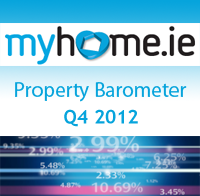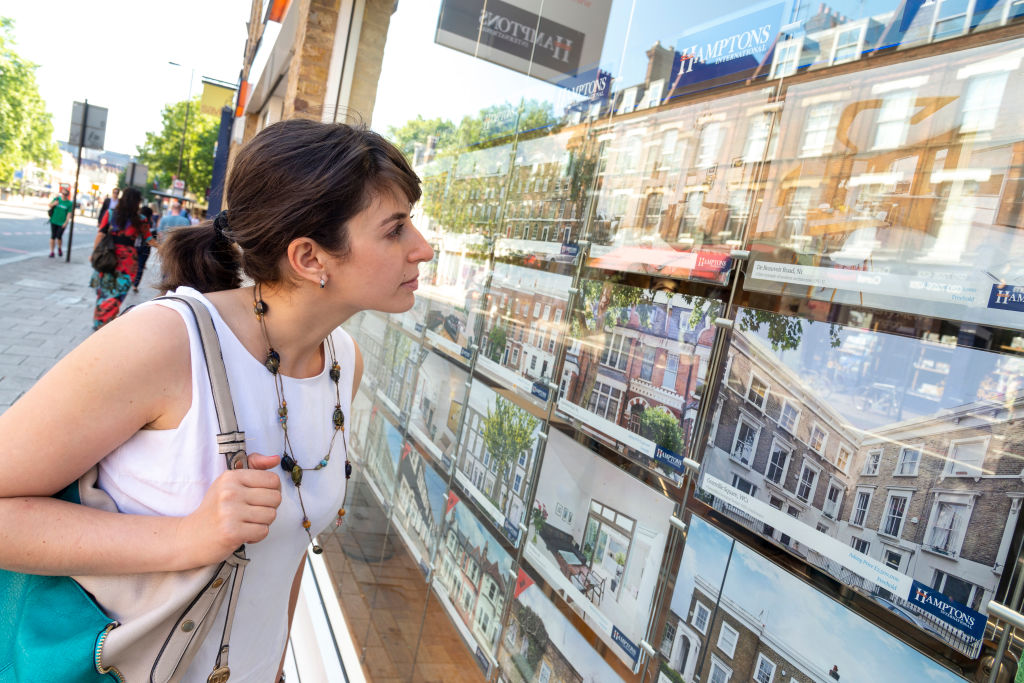- House prices decline by 2.9% in Q4 to bring annual rate of decline for 2012 to 14.8%
- Prices in Dublin declined by 1.6% - reversing 1.6% rise in Q3 - to leave annual rate at 12%
- Property Price Register shows number of transactions in 2012 was up 15.4% on previous year
- Average asking price nationally is now €201K; down 51.5% from peak
- Report Download

The rate of decline in property prices nationally accelerated somewhat in the last quarter of 2012 with prices falling by 2.9% - compared with a decline of 2.2% recorded in Q3 - to bring the annual rate of decline to 14.8%.
According to the latest house price survey from MyHome.ie the mix adjusted average house price nationally now stands at €201K, down 51.5% from the peak.
In Dublin prices fell by 1.6% in Q4 - reversing the rise of 1.6% recorded in Q3 – to bring the annual rate of decline in the capital to 12%. This is the lowest annual rate of decline in Dublin in four years.
The average mix-adjusted property price in Dublin is now €236K, 56% below the peak in Q4 2006.
An analysis of transactions on the Property Price Register shows the number of transactions in 2012 was just under 21,000, up 15.4% on the 2011 figures but almost unchanged from the 2010 total.
The author of the report, Caroline Kelleher from DKM Economic Consultants said 2012 had been a year of two halves for the property market.
“While we saw relatively high house price declines in the first six months, this gave away to significant moderation in the rate of decline nationally in the latter half of the year and to price stabilisation in Dublin” she said.
Ms Kelleher said the outlook remains uncertain with further volatility in prices likely in 2013.
“The disposable incomes of prospective buyers will be severely affected in the coming year by the measures announced in Budget 2013 - in particular the introduction of the property tax and the abolition of mortgage interest relief – and this will have a knock on effect on consumer confidence and the ability of individuals and couples to service a mortgage.
While we have seen price stabilisation in Dublin and some other urban areas over the last six months, the impact of the measures mentioned above plus a further austere budget later in the year means that it is too early to call a definite turning point for the property market just yet” she concluded.
The price of new properties declined by 3.2% in Q4 bringing the annual rate of decline to 9%. The average mix adjusted price of a new house now stands at €209K. For second hand homes the respective figures were 2.8%, 14.6% and €203K.
Angela Keegan Managing Director of MyHome.ie said the moderation in the pace of decline, the increase in the number of transactions during 2012 and the establishment of the Property Price Register were all positives which could be built on.
“The advent of the Property Price Register brought transparency to the market and we warmly welcome that development. The increase in transactions, especially cash transactions – they made up a staggering 46% of transactions in the first 9 months of the year – was also a notable development.
However unless the impact of the Budget measures are offset by economic growth, increased employment and a recovery in consumer confidence, the prospects of a recovery in the coming year could be problematic,” Ms Keegan said.
She also pointed out a number of indicative trends from the MyHome survey.
“Evidence of an increase in or stabilisation of prices for 4 bed homes in some counties suggests that these are now the preferred house type of choice. In Dublin the stock of available properties for sale continues to decline and is now at just over 4,000. In Q2 it was almost 6,000.
Meanwhile the varying ‘sale agreed’ times show that a two tier market is emerging, with times equivalent to 3 months in Limerick, 4 months in Dublin and 5.5 months in Galway. However the corresponding ‘sale agreed’ times elsewhere are 10.5 months in Munster, 9 months in Ulster and Connacht and 7 months in Leinster excluding Dublin” Ms Keegan said.
While the asking price of a 3 bed semi declined in most counties it remained static in Cavan, Monaghan, Wicklow, Galway and Waterford and actually rose in Carlow and Offaly.
The asking price of a 4 bed semi declined everywhere except Dublin where it rose 1.4% both quarterly and annually.
Looking to the main cities Galway recorded the biggest price decline in Q4 at 5.1% and annually at 17.8%. The median price for a property in the city is now €185K. Cork saw prices decline by 2% in Q4 and 13.3% for the year to leave the median price at €195K.
In Limerick and Waterford asking prices are down over 13% in the year with the median prices at €155K and €160K respectively.
Report Downloads
Ends.
For Further Information
Contact Kieran Garry,
Gordon MRM,
01-6650455 or 087-2368366
Note to Editor
Asking prices versus transaction prices: During the boom period when prices (and incomes) were rising and the number of buyers exceeded the number of sellers, transactions prices would have been significantly higher than asking prices, whereas now in recessionary times, asking prices are typically what vendors aspire to. As the market has adjusted downwards over the past four years and transactions have plummeted, asking prices have also had to adjust down¬wards. In today’s market characterised by oversupply in some locations and a lack of mortgage finance, transactions prices tend to be below asking prices as what buyers are willing to pay or can afford is much lower now than during the boom years. The gap should narrow, however, as sellers become more realistic and as the demand/supply balance is addressed.







